MARKETING
Why SEOs Need to Embrace AI

The author’s views are entirely their own (excluding the unlikely event of hypnosis) and may not always reflect the views of Moz.
It’s no question that the AI conversation has dominated the SEO community during the last year. The implications of this new technology are both extremely exciting and a little scary at the same time. At Go Fish Digital, we’ve been following these trends closely and refining our processes around the possibilities that AI brings.
Within both the SEO and larger technology communities, there is a huge discrepancy of opinions.
Many are weary of the implications and skeptical on the long-term benefits for marketers.
Some believe that this is a passing trend similar to voice search.
Others believe that this is a revolutionary technology that will impact every aspect of search in the future.
Out of curiosity, I performed a poll on my Linkedin page. I asked if SEOs thought that ChatGPT was going to disrupt SEO:
Nearly two-thirds of respondents said that ChatGPT is going to change our industry. I tend to agree with them. As a community, we need to be getting prepared for the imminent changes that AI is going to bring.
SEOs need to embrace AI
I believe that as a community, we need to be paying attention to this generational technology. While the tools certainly have their shortcomings, the outputs they’re producing already are nothing short of impressive. These tools will allow us to become more educated, more efficient and more technical.
It’s important that we not only keep in mind where these technologies are today. We must understand and expect that these tools will get exponentially better over time. The performance of GPT-4 is already significantly improved from GPT-3.5
GPT-3.5 feels unusable compared to GPT-4
— Paul Shapiro (@fighto) May 9, 2023
Thinking about a 5-year time horizon, these tools will advance far beyond what we’re seeing in today’s versions. This is why SEOs need to be adopting these technologies right now. The ones that do, will be well-positioned for the future of marketing.
Improving our SEO efficiencies
Back in March, I was curious as to how many SEOs were utilizing ChatGPT in their day-to-day workflows. Despite the fact that it was relatively new, I wondered how quick SEOs were to adopt using it:

To my surprise, 52% of respondents already claimed to be using ChatGPT to help with regular SEO tasks. This poll was conducted just 3 months after it’s initial release.
This makes sense as there are a lot of really great use cases for SEO tasks that we do on a daily basis. By using AI technology like ChatGPT, you can significantly improve the efficiency at which you’re able to work on some of these tasks.
A simple example is keyword research. With ChatGPT, you can immediately create large seed lists of potential keywords that have semantic relationships to the core topics that your website is trying to compete for.
Tom Demers recently wrote a great guide on Search Engine Land where he walks through his process of using AI for keyword research. In the guide he shows multiple examples of how he was able to use different types of prompts to directly identify keywords or find sources to mine for query opportunities.
He even showcased how he was able to export data from third-party SEO tools and bring it into a table format within the ChatGPT interface:
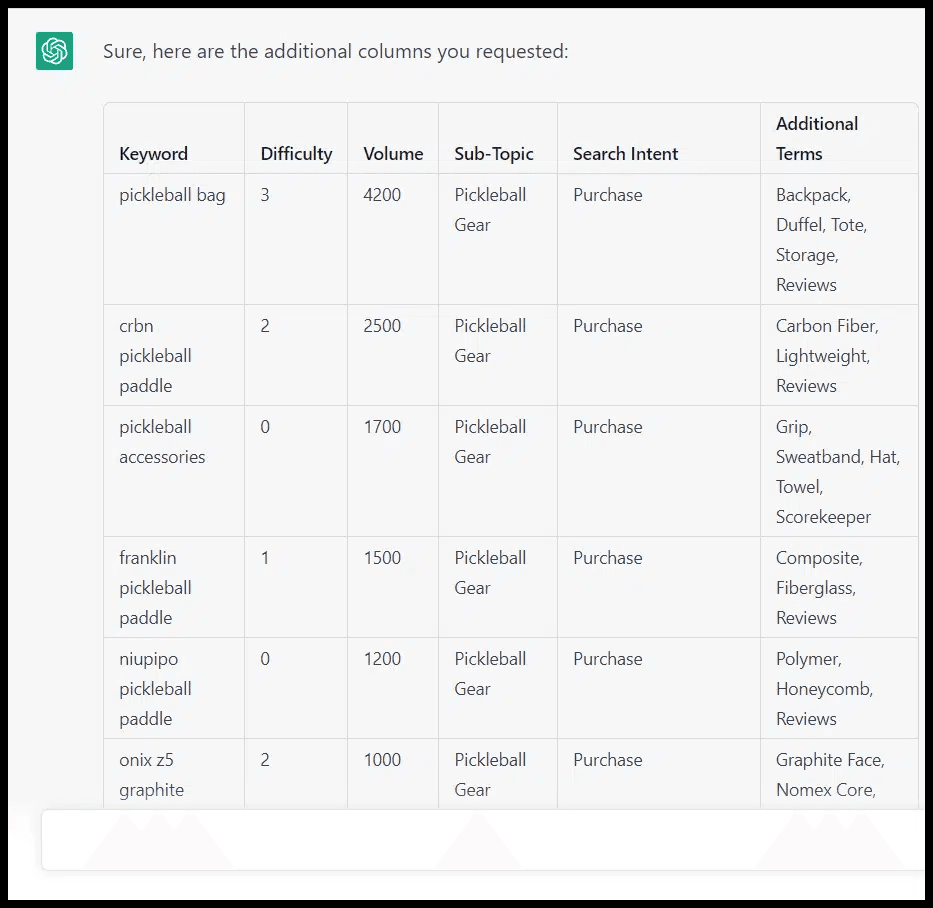
Content ideation is another great example of a tactical task that ChatGPT can leverage. Here I prompted ChatGPT to give me 30 different topic ideas about “The Metaverse”. It delivered them in about 30 seconds:
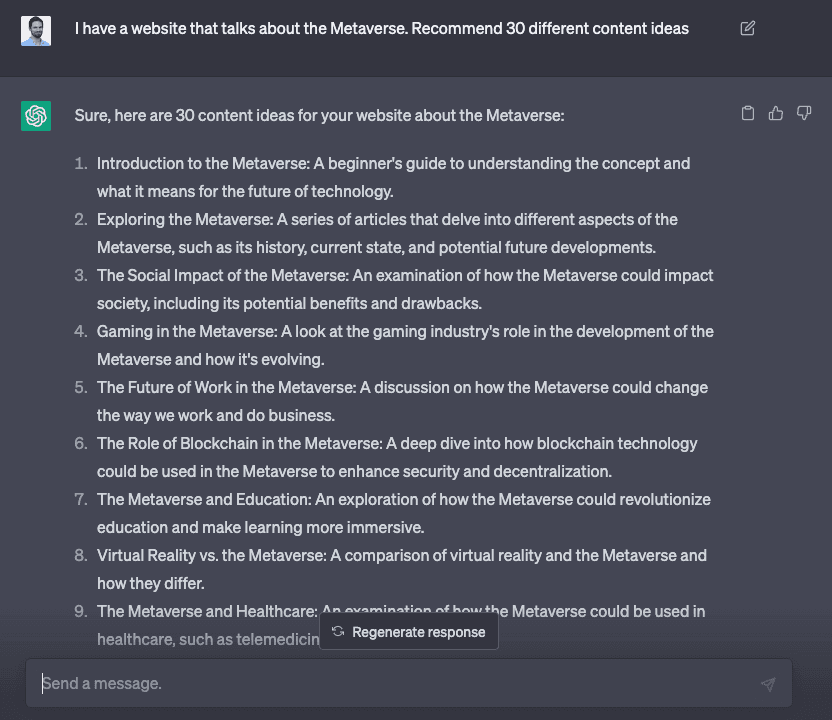
If I ran a technology blog, I could vet that against existing content on the site and find gaps where search opportunities might exist. Even if there was no direct SEO value, these topics still help position us as a topical authority in a particular content area.
You could even use ChatGPT to optimize your site’s content at scale. Tools such as GPT For Work allow you to connect to Google Sheets to the ChatGPT API. This allows you to feed in dynamic prompts and get the output back in Google Sheets.
As a result, you could create thousands of title tags and meta descriptions. You could give a site a baseline level of optimization with about 30 minutes of setup:

From a tactical perspective, there are so many use cases for ChatGPT to help with SEO.
-
Keyword research
-
Content ideation
-
Content evaluation
-
Schema generation
-
Featured snippet creation
-
Title tags and meta descriptions
-
Ideas for new content sections
-
Readability improvements
While there are many resources available, Alyeda Solis wrote a fantastic guide on the different use cases for SEO.
If you’re performing SEO in any capacity, it’s very likely that you can find a use case where your day-to-day efficiencies can be improved by utilizing some of these processes. This will allow us to produce a more efficient output and spend time working on initiatives that are less prone to automation.
Enhancing our knowledge base
I believe that only looking at strictly tactical implementations would be using AI far within its limits. There are many other great applications for the SEO community beyond that.
One of the best use cases that we see many industries using ChatGPT for is to enhance their knowledge base. AI can be an excellent teacher when prompted correctly. It can summarize information exceptionally quickly and give it to us in an output that’s completely customized to our learning style.
For example, the late-great Bill Slawski used to analyze patents that Google filed for. These patents are more technical and Bill used a long-form writing style.
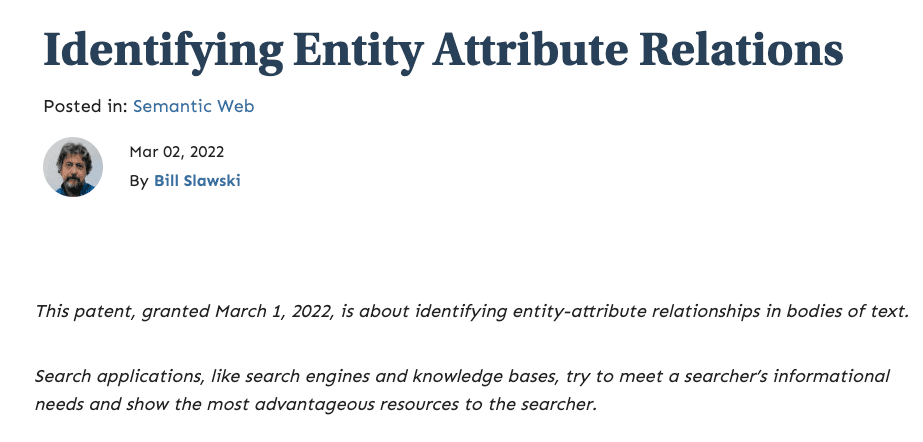
We started testing running Bill’s patents through ChatGPT and prompted it to summarize core points. A successful prompt was “Summarize the whole article in 5 bullet points. Explain like I’m in high school”:
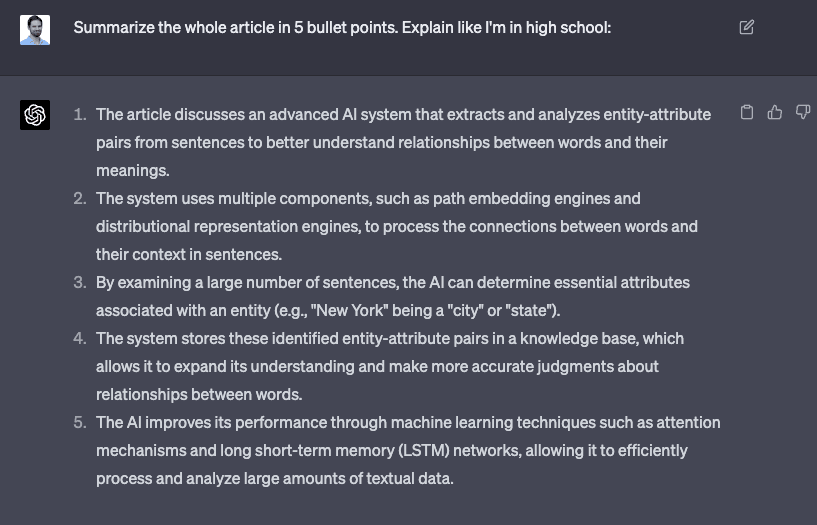
For my learning style, this allowed me to get enough detail to understand the patent and its implications without having the output oversimplify Bill’s ideas. If I was curious about any given idea, I could simply prompt ChatGPT to elaborate more and it would allow me to go deeper.
You could also get summaries from Google’s documentation. Here I fed it text from Google’s page on canonical tags and asked it to give me best practices.

How many of us struggle with technical SEO, web technology or understanding how search engines work?
With ChatGPT the work of great technical minds like Bill and Google’s documentation essentially becomes democratized. Now when you encounter an SEO topic that you don’t understand, you can use AI as a teacher.
Of course, there are drawbacks to this. These types of summaries might not fully represent an author’s work as content must be left out and elements such as tone of voice aren’t taken in to consideration.
However, as a whole, this is a very powerful thing. Now the knowledge base that exists around SEO is more accessible to the entire community.
Empowering a community of creators
Personally, I think the most exciting aspect of the implications of AI for the SEO community are the technical possibilities that it opens up. While many of us are technically minded, not everyone has a background in development.
ChatGPT is going to enable the SEO community to become creators.
With the right prompting, you’ll now be able to create code that you weren’t able to before. That’s going to significantly impact your effectiveness as a search marketer.
For example, Screaming Frog is now opened up so much more for SEOs. I recently needed to scrape the BreadcrumbList structured data of REI’s site. When doing similar tasks before, it’s taken hours of debugging, re-running crawls and even meetings with other members of our team.
I asked ChatGPT to create a Screaming Frog extract and fed it sample HTML. Within 5 minutes, I was able to get a working XPath that allowed me to extract exactly what I needed:
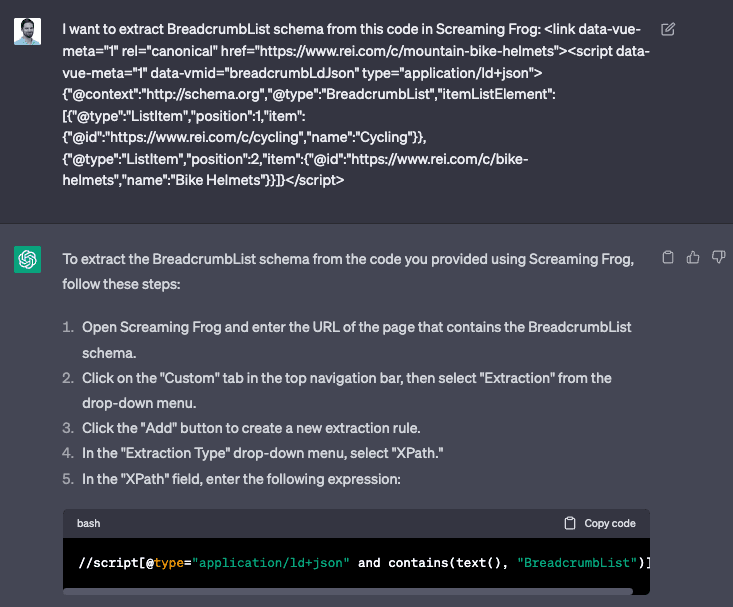
The process could be applied to many other tools. ChatGPT could help you create API calls, SQL queries, Python scripts and many other things. This will empower the community to create new things that might not have been possible for many people.
On top of one-off pieces of code, you’ll now be able to create tools that are fully customized to your exact needs.
I’ve never created a Chrome extension before. However, ChatGPT has the power to take the prompts you give it and turn it into a fully functioning extension.
With about 30 minutes of prompting and debugging, it was able to create a custom SEO extension that pulls data such as title tags, meta descriptions, H1s, URL and more:
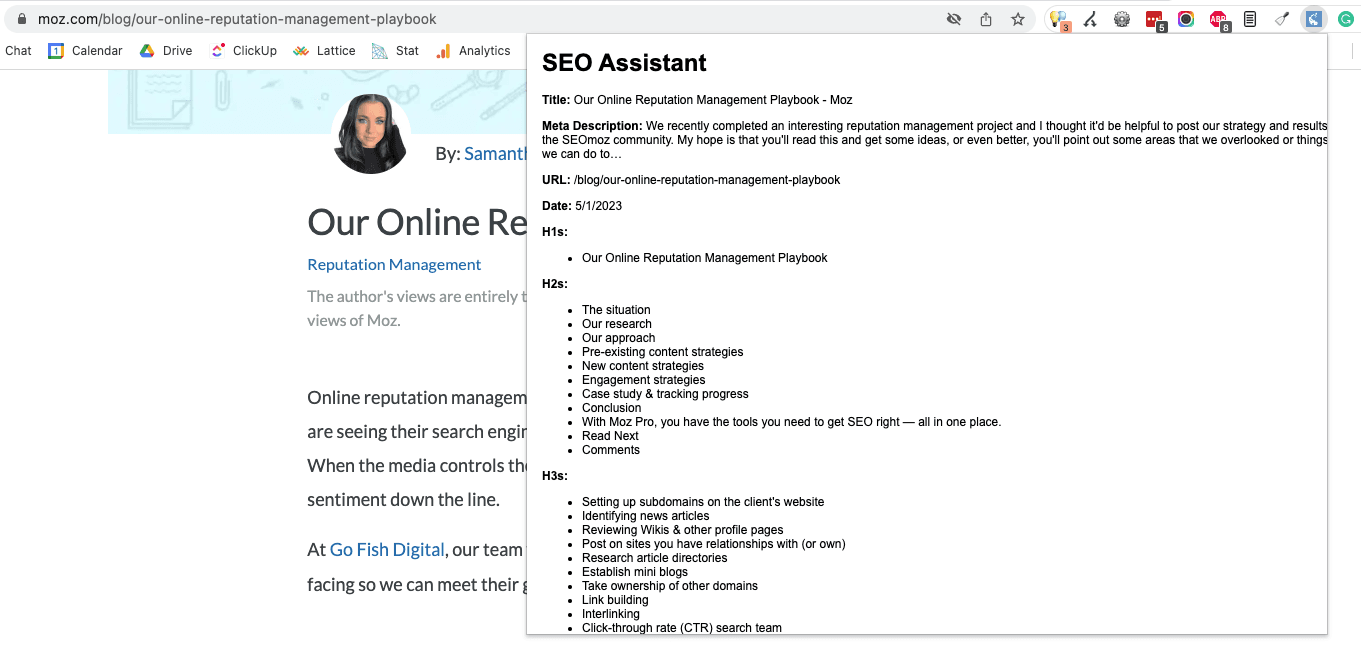
While there are great tools like this available, I could customize this extension to the exact specifications that I want.
You can even create tools that help improve your SEO efficiencies. My colleague Dan Hinckley was able to further iterate on this extension.
By connecting it to the ChatGPT API, he was able to create an SEO extension for our team that provides recommendations for title tags, H1, new content sections, and more:
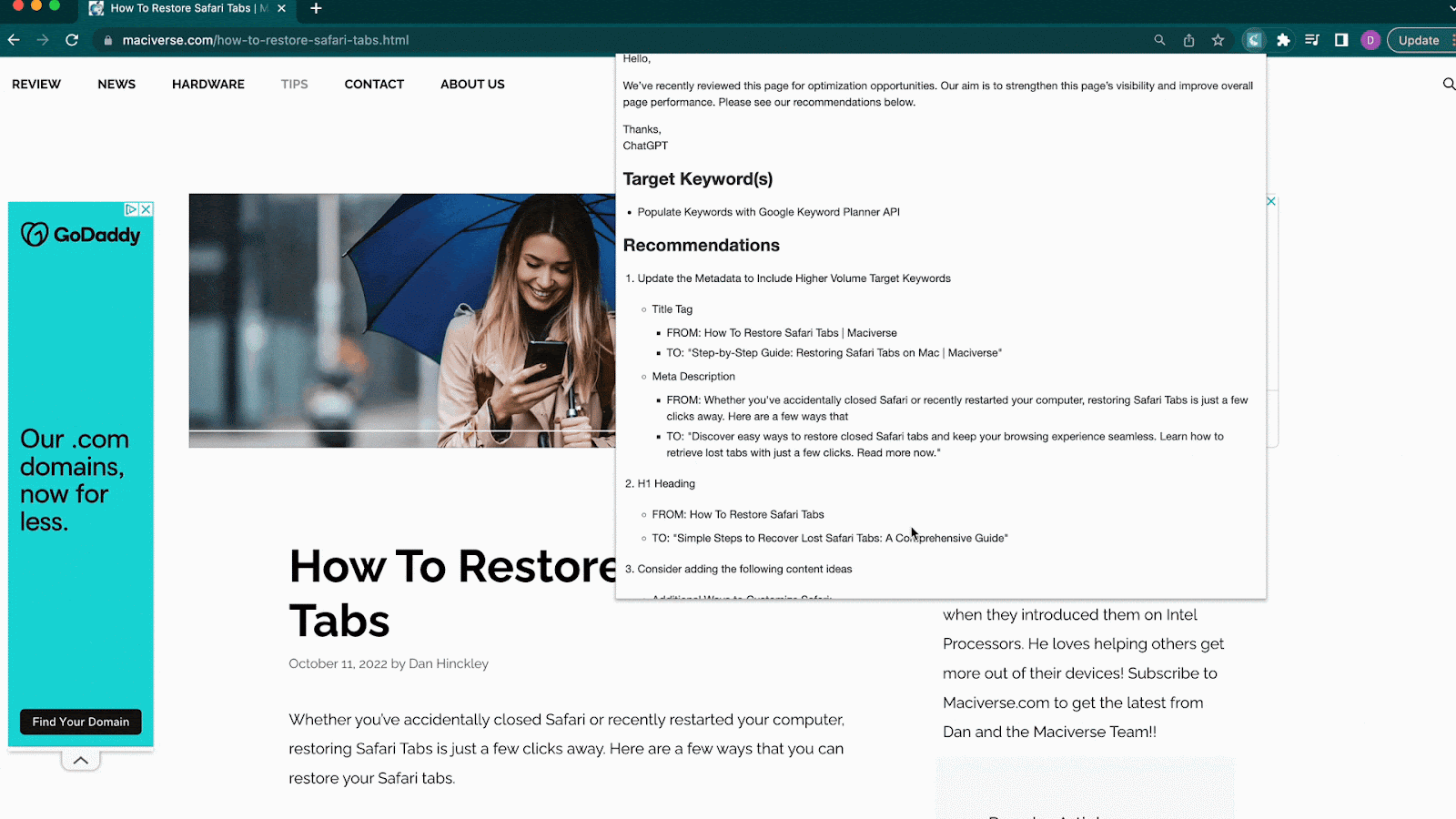
Now this gives the entire team at Go Fish Digital a new tool to use as part of their process. We can quickly find page-level SEO opportunities and can decide which ones are worth actioning on for a given recommendation.
I suspect that ChatGPT will produce other solutions similar to this in the community. By embracing the power of AI, SEO teams will be able to identify the needs that they have and create a solution that perfectly fits their internal processes.
Conclusion
To us, it’s clear that AI is going to have a significant impact on the SEO community. The data already shows that SEOs see these technologies as having the power to significantly disrupt the industry and are already incorporating tools like ChatGPT into their day-to-day processes. I believe the SEOs that adapt to these changes will be the ones that see the most success.
Marketers that are able to leverage AI to improve efficiencies, grow their knowledge base and build customized solutions to improve their processes will be well-positioned for whatever the future of search holds.
Chris will be speaking at MozCon 2023 this August in Seattle! Join us for inspiring sessions with our incredible lineup of speakers.
We hope you’re as excited as we are for August 7th and 8th to hurry up and get here. And again, if you haven’t grabbed your ticket yet and need help making a case we have a handy template to convince your boss!

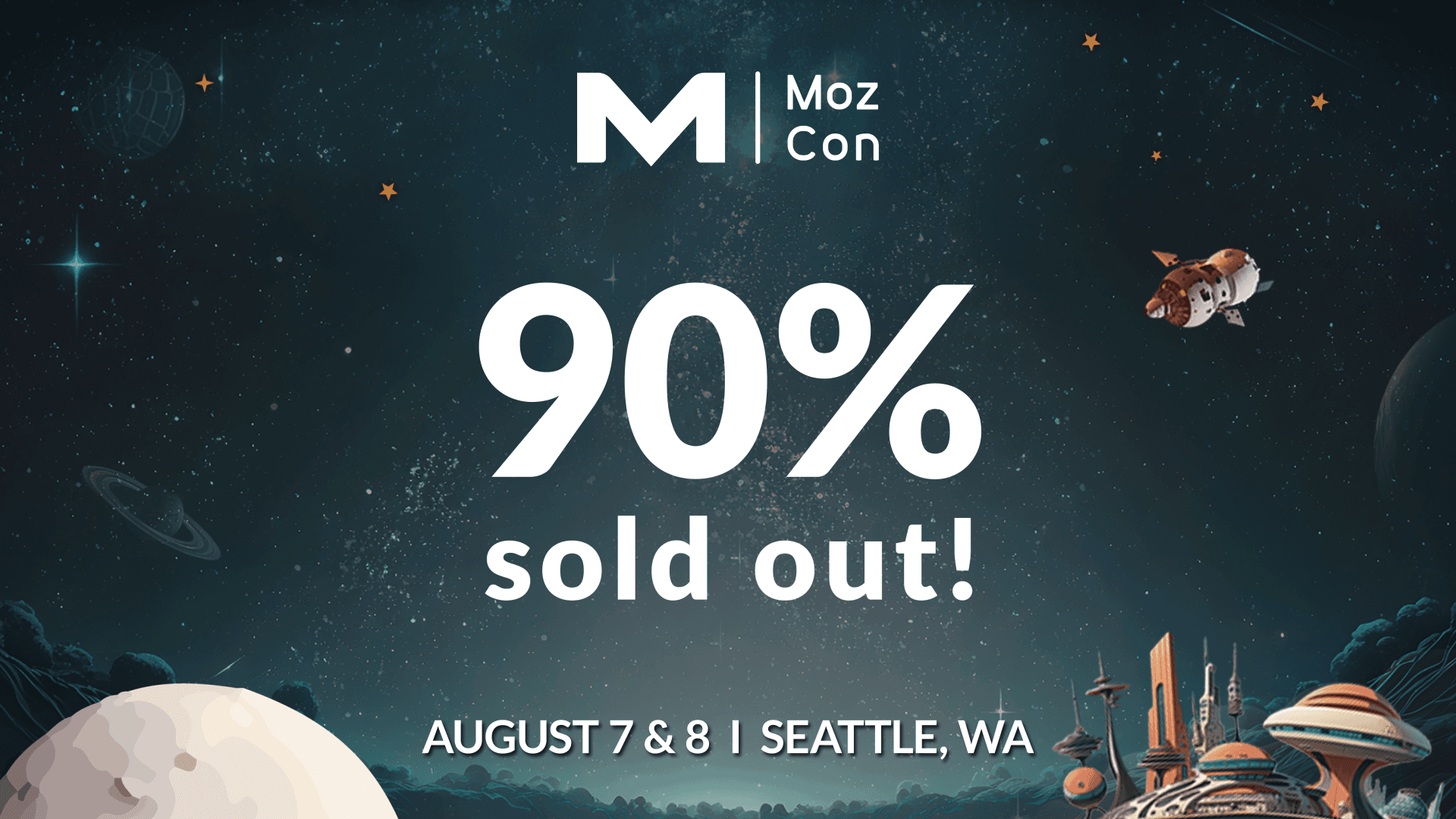
![How AEO Will Impact Your Business's Google Visibility in 2026 Why Your Small Business’s Google Visibility in 2026 Depends on AEO [Webinar]](https://articles.entireweb.com/wp-content/uploads/2026/01/How-AEO-Will-Impact-Your-Businesss-Google-Visibility-in-2026-400x240.png)
![How AEO Will Impact Your Business's Google Visibility in 2026 Why Your Small Business’s Google Visibility in 2026 Depends on AEO [Webinar]](https://articles.entireweb.com/wp-content/uploads/2026/01/How-AEO-Will-Impact-Your-Businesss-Google-Visibility-in-2026-80x80.png)















